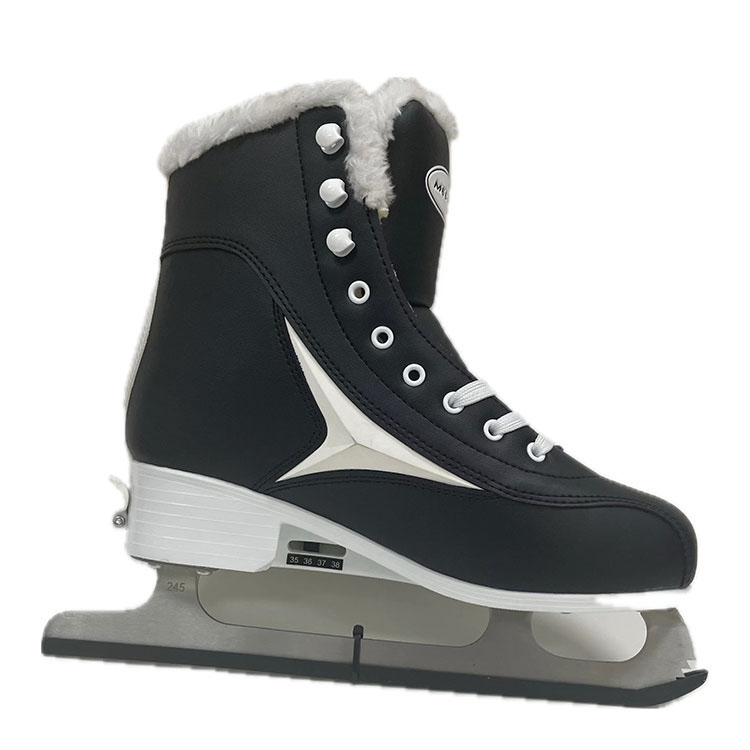Why Are Ice Skates Essential for Every Skating Enthusiast?
2024-12-17
Ice skating is a thrilling and enjoyable sport that combines skill, grace, and precision. Whether you're gliding across an ice rink for leisure or competing in a professional competition, ice skates are an essential part of the experience. But what makes ice skates so important, and how do they impact your performance on the ice? In this blog, we’ll explore the various aspects of ice skates, why they’re crucial for skating, and how to choose the right pair for your needs.
1. What Are Ice Skates and How Do They Work?
Ice skates are footwear designed specifically for ice skating. They have metal blades attached to the bottom that allow the wearer to glide smoothly across ice. The blades are made of high-quality steel and are sharpened to ensure optimal performance and control. The key to their function lies in the design of the blade, which distributes the skater’s weight over a small surface area, creating friction that allows the skater to glide.
There are two main types of ice skates: figure skates and hockey skates. Figure skates are designed for artistic skating and have a toe pick for performing jumps and spins, while hockey skates are built for speed and agility on the ice and have a shorter, curved blade.
2. Why Are Ice Skates Important for Skating?
#Support and Comfort
One of the most critical factors when choosing ice skates is comfort. Ice skates must provide ample support to protect the ankles and feet from strain or injury while ensuring comfort during long periods of skating. Properly fitting skates prevent blisters, foot fatigue, and provide stability, which is essential for controlling your movements on the ice.
Well-designed ice skates also offer ankle support, preventing sprains and allowing skaters to maintain balance and execute precise movements. For those new to ice skating, choosing a pair that offers the right balance of support and flexibility can make a significant difference in improving skills.
#Enhanced Performance
The quality of your ice skates directly affects your performance on the ice. The blade design and sharpness play a major role in how well you can skate. A sharper blade provides more grip on the ice, which allows for better control, faster speeds, and smoother turns. For figure skaters, the design of the blade also allows for greater precision when performing jumps, spins, and footwork.
For hockey players, the sharpness and curve of the blade enable quick direction changes and explosive acceleration. Choosing the right skates based on your activity—whether it’s figure skating, hockey, or recreational skating—will improve your overall skating experience.
#Safety
Safety is a key reason why properly fitted ice skates are essential. Poorly fitting skates or skates with dull blades can cause instability, leading to falls and injuries. Skating on dull blades, in particular, reduces your ability to stop and control movements effectively, increasing the risk of accidents. Choosing the right pair of ice skates ensures your safety and allows you to enjoy the sport with confidence.
3. How to Choose the Right Ice Skates for You?
Selecting the right pair of ice skates depends on several factors, including your skating experience, the type of skating you plan to do, and your personal preferences.
#1. Type of Skating
As mentioned, the two most common types of ice skates are figure skates and hockey skates. If you're interested in figure skating, you'll need skates with a longer blade and a toe pick for performing jumps and spins. On the other hand, if you're into ice hockey, you'll need skates designed for speed, quick turns, and better grip on the ice.
#2. Fit and Comfort
Proper fit is crucial for any ice skate. When trying on skates, make sure they fit snugly without being too tight. A good fit should provide support and security without causing discomfort. Remember that ice skates typically feel tighter than regular shoes, as they need to provide firm ankle support. Always try on skates with the socks you plan to wear while skating.
#3. Blade Sharpness
Blades come in varying levels of sharpness, and it’s important to choose a pair that suits your skill level and the type of skating you’ll be doing. Beginner skaters may not need ultra-sharp blades, while experienced skaters might prefer a sharper edge for better grip and control.
#4. Material and Durability
Ice skates come in different materials, including leather, synthetic leather, and nylon. Leather skates are durable and provide a comfortable, flexible fit but tend to be more expensive. Synthetic materials are lightweight and budget-friendly but may not offer the same level of flexibility and longevity.
4. How Do Ice Skates Benefit Skaters Beyond Performance?
#Physical Fitness
Ice skating is an excellent way to improve physical fitness, and wearing the right pair of ice skates enhances the benefits. The support and comfort of well-fitting skates make it easier to maintain proper posture, balance, and form, which helps prevent injuries and encourages longer skating sessions.
Regular ice skating improves cardiovascular health, boosts endurance, and tones muscles. The more comfortable and well-supported your skates are, the more likely you are to skate for longer periods, reaping the full fitness benefits.
#Mental Benefits
Skating is not only a physical activity but also a mental one. It requires focus, coordination, and rhythm. Ice skates that allow you to perform well and enjoy the sport to the fullest can have positive effects on your mental well-being, helping you unwind and de-stress.
5. Conclusion: Why Are Ice Skates Essential for Skating Enthusiasts?
Ice skates are more than just footwear—they are a key factor in enhancing your overall skating experience. Whether you’re a figure skater, a hockey player, or a recreational skater, the right pair of ice skates ensures that you’re comfortable, safe, and performing at your best. From providing ankle support and improving control to boosting performance and safety, ice skates are crucial for anyone serious about skating.



